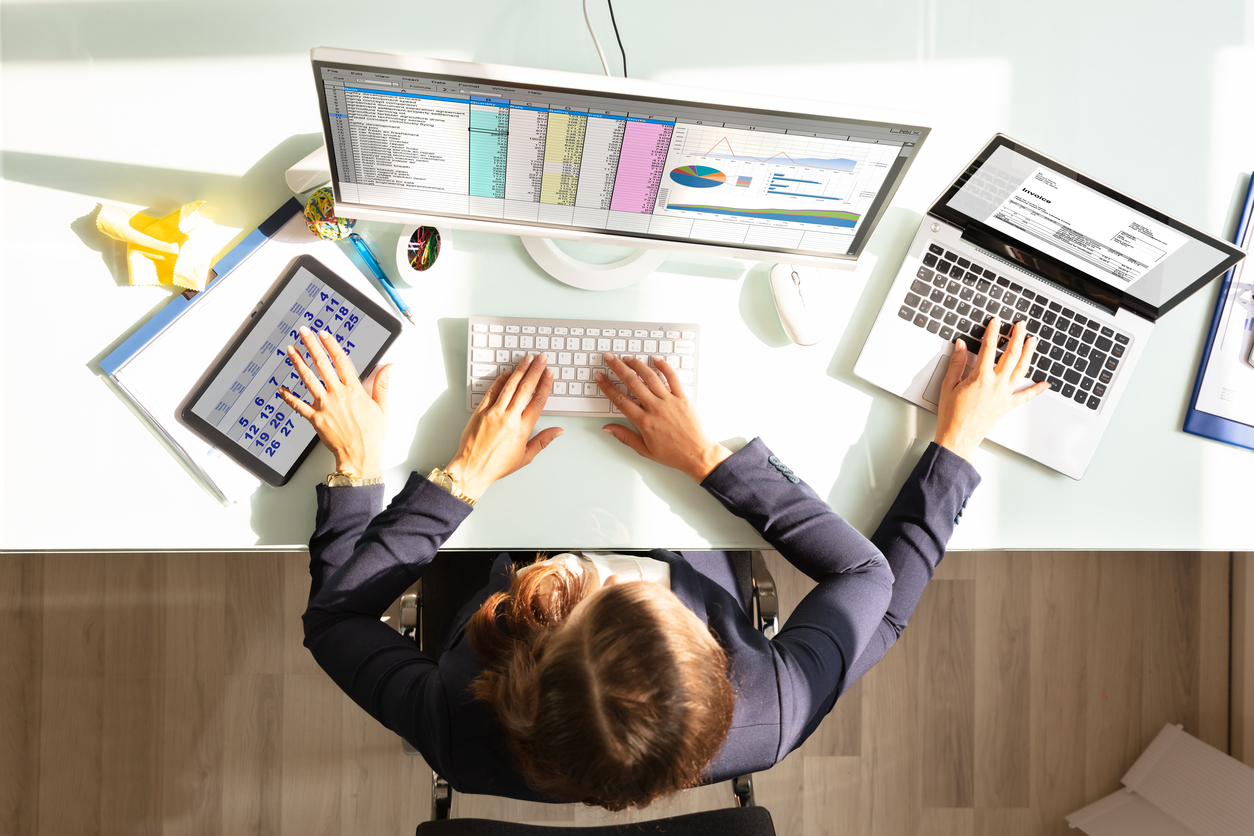Multitasking: what it is and how to multitask
Have a look at your computer or mobile phone: how many programs, apps and websites do you have active? Most likely, many different ones. This increasingly common practice - known as open windows syndrome - offers clear evidence of multitasking, a highly nuanced term.
Nowadays, with the world moving at breakneck speed, companies are looking for agile, versatile professionals. In fact, knowing how to multitask is one of the skills companies value most highly, according to Indeed. In other words, being able to deal with various matters at the same time has become a source of added value for employees.
However, multitasking has its risks. Without proper controls, it can have the opposite effect to what we seek: everything takes more time, you make more mistakes and become less productive. Did you know that, according to the American Psychological Association, switching from one task to another can lead to a 40% loss of time? Therefore, it's essential to understand this skill from a positive perspective, and learn how to get better at multitasking to harness it efficiently in your daily life.
What is multitasking?
Multitasking is the ability to perform several activities at once, switching between one and another quickly and efficiently. One example of multitasking would be replying to an email while simultaneously speaking on the phone, another would be taking notes while listening to a lecture.
The term itself hails from 1965. Specifically, it first appeared in an IBM document outlining the features of the System/360. Shortly after, multitasking made the leap to humans, in reference to the ability to perform several tasks at once, i.e., switching between one and another in a split second, without wasting precious time in the process.

Pros and cons of multitasking
This overlapping or sandwiching of activities is fairly controversial. On the one hand, it involves dividing our attention and cognitive resources between different activities, with the aim of completing each of them effectively. So why the controversy? Multitasking is not always efficient.
However, understanding how to multitask and how to get better at multitasking is of particular importance nowadays, when work is iterative rather than linear, and where there are ever more distractions in the workplace - making this an essential skill to pivot our attention. Its successful implementation depends on our ability to properly manage our workloads and prioritise tasks.
The risks of multitasking
So what exactly are the critics saying about multitasking? The drawbacks of multitasking range from a decrease in the use of our working memory to a greater tendency to get distracted, an increased likelihood of making mistakes and omitting important information, and difficulty in analysing and understanding the primary focus and current status of projects, all of which ultimately leads to an overall decrease in productivity.
In this regard, according to Gerald Weinberg's research published in Quality Software Management, when five tasks are carried out in multitasking mode, 75% of productivity is lost due to the mental wear and tear it entails. Further, it can also affect our mental health, since multitasking increases levels of cortisol, known as the stress hormone, in turn increasing exhaustion and the chances of experiencing burnout.
Advantages of multitasking
Conversely, research also highlights the benefits of multitasking when done properly. So, while it can trigger the release of cortisol, it also leads to an increase in dopamine, a.k.a. the happiness hormone. Achieving different goals through multitasking - and that feeling that you're able to take on anything - can reward us with feelings of satisfaction and motivation.
On a practical level, being an expert at how to multitask allows you to better manage your time, increasing your mental agility and ability to concentrate - even in BANI environments, reduce failures, enhance your flexibility, take on new responsibilities and, ultimately, be more productive.
Multitasking: a question of age?
It may come as a surprise to find there are such opposed views of multitasking. This is because the key to how to multitask lies not so much in the concept itself as in the person doing it. Scientific research has even shown that there are ‘supertaskers’ who are notable for their ability to effortlessly juggle two or more things at once. Who are they?
Traditionally, the ability to multitask was associated with the female gender, in a belief that women, unlike men, can do several things at once. However, studies have debunked that myth, and it has now been proven that gender has no influence on the ability to multitask. But what about age? Science tells us that technological transformation and the growing information overload are optimising people's ability to multitask.
As a result, digital natives have different neural connections, which allow them to tackle various tasks at once without it causing them stress or reducing their performance. For example, according to multigenerational research conducted by Accenture, in over 30 countries, some 64% of millennials spend over half of their day multitasking, compared to just 54% of Generation X and 49% of baby boomers.

How to get better at multitasking
Our brains are able to efficiently handle multitasking if we hone this skill. This is of course vital when taking into account that nowadays, companies have certain organisational, strategic and cultural characteristics that require greater flexibility, versatility and responsiveness. So, how can you get better at multitasking?
Organisation is your strongest ally. In the strictest sense, the human mind is not designed to perform various tasks at once; rather, it performs one after another so quickly that they appear to be simultaneous. This is known as monotasking. Hence, organisation and planning are fundamental if you want to effectively multitask.
Have realistic goals. To avoid the frustration of not being able to do it all, set yourself achievable goals. It's not about taking on so many responsibilities that you end up burnt out, but about tackling the greatest number of tasks you can handle without adverse effects.
Say bye-bye to distractions. When you multitask, your mind divides its attention between several tasks. Don't make this more difficult by leaving it open to needless stimulation. Avoid losing a single drop of concentration by ensuring you minimise any distractions around you.
Open organisations are better. To know how to get better at multitasking, you need to be aware of what is required at your business level. You don't only need to be a master of multitasking; you need a good growth medium in which to hone your skills. This means that the company you work for should have an open, flexible structure, with goal-oriented business practice.
Varying task types. According to Mar Sabadell, from the Universitat Oberta de Catalunya, "Brain activation levels are different when a task responds to tactical stimuli compared to visual and auditory cues." That's why she recommends ensuring multitasking involves varied activities.
For example, speaking and listening at the same time can be counterproductive, while with listening and writing a message, there is less risk of losing concentration. You can also combine complex tasks with other more repetitive or mechanical ones. Just as you can chat no problem while you walk down the street, you can probably also stamp forms while speaking to your team, right?
Mandatory breaks. To perform multitasking, which is a great activator of brain function, it is essential to programme rest times that allow the mind to recover from its efforts. Consequently, experts recommend 5-to-10-minute breaks every hour.
Training. To properly learn how to multitask - a skill anyone can get better at- you need to train yourself. You will then slowly note an improvement in your multitasking abilities. It’s also a great idea to learn specific time management techniques and strategies, such as the Pomodoro method and the time blocking system.
In short, in an increasingly fast-paced and competitive environment, knowing how to multitask, an ability to effectively and efficiently perform various tasks at once, has become an essential skill to improve time management and properly prioritise tasks. As such, by multitasking it becomes possible to successfully tackle our workloads and the changing demands of the workplace - hence the importance of developing this skill to improve individual as well as organisational performance.
Do you want to develop professional skills that will help you access better job opportunities? Discover Santander Open Academy, the training space you need to keep growing.
Join our global platform for learning and professional development and access courses at zero cost, training content in a wide range of formats and scholarships from leading universities and institutions.
If, like us, you believe that we should never stop learning, sign up here and find out what we have for you!
Más posts interesantes que leer...
-
 22/07/2025 | Santander Universidades
22/07/2025 | Santander UniversidadesCrossing borders to study: new allies on the university journey
Card text -



